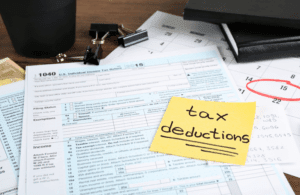
Whenever these convertible parts convert into shares, it reduces the earning per share of a company. It will result in a decrease in the shareholding percentage of the existing outstanding shareholders of the company. Earnings paid to preferred shareholders are subtracted during diluted shares calculation as earnings per share (EPS) is only applicable to common shareholders. A company also often keeps a portion of its total outstanding shares of stock in its treasury from both initial stock issues and stock repurchase.
- Changes in outstanding shares can influence a company’s stock price, impacting investor sentiments.
- Several factors can cause a company’s number of outstanding shares to rise or fall, with one of the most common being stock splits.
- These can be shares that are part of a shelf offering or shares the company holds for employees as part of their employment benefits.
- The term shares outstanding is defined as the total number of shares a company has issued to date, after subtracting the number of shares repurchased.
- By understanding and utilizing the formula provided, users can easily calculate outstanding shares and gain insights into a company’s financial status and market value.
- Lockups aside, long-standing investors such as founders or venture capital backers may have their own restrictions on selling, or may have signaled that they have no intent to do so.
Types of Shares Outstanding

And so in theory (and often in practice), highly-shorted stocks with a low float present ripe conditions for a so-called “short squeeze”. For a loss-making company, the diluted share count will reduce loss per share, since the net loss is being spread over a larger amount of shares. Changes in shares outstanding over time also reveal how valuable shares are as a stake of ownership in the company, as the number of shares available directly affects this. The float is the portion of outstanding shares that’s most relevant for smaller investors. However, due to the fluctuations in share counts between reporting periods, the figure is typically expressed as a weighted average.

Everything You Need To Master Financial Modeling

The difference between the basic earnings per share and diluted earnings per share is that the latter adjusts for the net impact from potentially dilutive securities. Conceptually, the earnings per share (EPS) ratio measures the net earnings of a company attributable to common shareholders, expressed on a how to find shares outstanding per-share basis and after adjusting for preferred dividend issuances. Let us understand the advantages of diluted shares outstanding through the discussion below. The figure for number of outstanding shares does not include any treasury stock.

Trading 101
For example, you can calculate a company’s earnings per share (EPS), a common metric used https://www.bookstime.com/ to compare companies’ performances. You can find a company’s earnings per share by dividing the company’s profit by its outstanding shares of common stock. Next, you’ll want to look for the common stock line item on the company’s balance sheet.
- Founded in 1993, The Motley Fool is a financial services company dedicated to making the world smarter, happier, and richer.
- At any given point, instruments like warrants and stock options must be accounted for as well.
- Since we now have the beginning and ending number of common shares outstanding, the next step is to calculate the weighted average shares outstanding.
- Outstanding shares and float stock are both key indicators used to evaluate a company’s stock, but they represent distinct aspects of the company’s ownership structure.
- These examples demonstrate how diluted shares outstanding can impact shareholder value and market capitalization.
- Investors and analysts use outstanding shares as important statistics to evaluate a company’s performance and value.
- Earnings paid to preferred shareholders are subtracted during diluted shares calculation as earnings per share (EPS) is only applicable to common shareholders.
For most companies, the number of authorized shares well exceeds the shares outstanding. In addition, most public companies don’t need to issue more shares, at least in the number required to bump up against the authorized maximum. Understanding how to calculate outstanding shares for a public company would appear to be a simple matter. Moreover, the number of shares outstanding is extremely useful when monitoring how a company conducts its business, as things like stock splits also affect share numbers. A stock split occurs when a company increases the number Certified Public Accountant of its outstanding shares without changing its overall market cap or value.

These statements are available on companies’ investor relations pages or the SEC website. The information is also available on stock data websites like Stock Analysis. If you’re going to become an investor, there are a few things you should know — like these formulas. Get instant access to video lessons taught by experienced investment bankers. Learn financial statement modeling, DCF, M&A, LBO, Comps and Excel shortcuts. Download the Diluted EPS Formula Excel Template from the Example at the top of this article.

